Any links on this page that lead to products on Amazon are affiliate links and I earn a commission if you make a purchase. Thanks in advance for your support!
Ultimate Acoustic Guitar Buyers Guide: How To Choose A Great Guitar
Choosing a new acoustic guitar, whether you’re a beginner or experienced player, is an adventure that can be both exciting and stressful. Why? Because once you start to check out potential guitars you’re faced with many different sizes, shapes, styles, wood types, and more to choose from.
How do you know what’s good and not so good?
To help you on your journey, I’ve written this Ultimate Acoustic Guitar Buyers Guide to help you navigate and understand all the different options available to you. No matter your budget, you’ll learn the ins and outs of acoustic guitars so you can confidently purchase the best guitar for you.
Choosing a new acoustic guitar, whether you’re a beginner or experienced player, is an adventure that can be both exciting and stressful. Why? Because once you start to check out potential guitars you’re faced with many different sizes, shapes, styles, wood types, and more to choose from.
Update Notes:
This article was updated September 11, 2019.
How do you know what’s good and what’s not so good? This Ultimate Acoustic Guitar Buyers Guide to help you navigate and understand all the different options available to you. No matter your budget, you’ll learn the ins and outs of acoustic guitars so you can confidently purchase the best guitar for you.
Acoustic Guitars For Fun and Profit
The acoustic guitar is one of the most popular and versatile instruments for both amateur and professional musicians. It’s fun to play, and it’s pretty easy to learn the basics and start playing quickly. Properly taken care of, an acoustic guitar can last a lifetime.
Choosing a new acoustic guitar can be fun and exciting, but it can also be quite overwhelming. There are dozens of makes and models to choose from, lots of body styles, many different wood types, and a wide range of prices. There’s a lot of options to consider, as every facet of the acoustic guitar affects its sound and tone, including its size, type, materials, style, and strings.
So, I’ve written this buyer’s guide to help make your decision a lot easier. A little knowledge goes a long way in the world of guitars! In fact, I learned quite a lot writing this article, and I’ve been playing guitar for over 40 years! Some of which I wish I knew when I bought my last guitar!
For Both Beginners & Experienced Players
If you’re reading this, you probably fall into one of two camps:
- You’re a beginner looking to buy your first guitar
- You’re a more experienced player looking to upgrade to a better instrument
No matter if you’re a beginner or a more experienced player, many things go into choosing a guitar that’s right for you and fits your budget.
For beginners, a quality guitar that’s easy to play helps the learning process immensely as it makes the whole process faster and more enjoyable. And for more experienced players, a new guitar can help you move to the next level.
Let’s get started!
Table of Contents
Check out my complete list of studio acoustics articles:
Acoustic Guitar Overview
An acoustic guitar is a hollow-bodied instrument usually constructed out of wood (though there are some instruments made of glass, bamboo, fiberglass, carbon, plastic, or metal) and played with a pick or with the fingers.
Regular acoustic guitars have six strings. The standard tuning, from the low to high strings, is E A D G B and E.
Other tunings, such as dropped D or open G, are popular in many modern styles of playing.
Three Types Of Acoustic Guitars
The three main types of acoustic guitars are flat-top guitars, archtop guitars, and 12-string guitars.
Flat-top guitars are the most common type of acoustic guitars. They get their name from having a flat top or soundboard. Flat-tops are used in just about every style of music.
Archtop guitars have an arched top rather than a flat top. Archtops come in acoustic, semi-acoustic, and electric versions. They are favored by rockabilly, blues, and jazz guitarists.
The characteristic look of an archtop guitar comes from its F-holes – the curved treble clef-shaped openings on either side of the guitar’s body. F-holes replace the standard round soundhole found on flat-top guitars.
12-string acoustic guitars have 12 strings grouped in pairs that are tuned to the same notes as a regular acoustic guitar. The difference is that the two highest strings (E, B) are tuned in unison, while the four lower strings (G, D, A, and E) are tuned in octaves.
A 12-string produces a full sound that’s most often used for strummed parts, not leads. They are very popular for pop, country, and rock styles.
The main drawback of 12-string guitars is that they can be challenging to play, especially if they are not set up correctly. It can take quite a bit of strength to play barre chords on a 12-string, and tuning a 12-string can be a time-consuming task.
So, if you’re a beginner, don’t start with a 12-string. Learn on a six-string and move to a 12-string later.
Steel String vs. Nylon String Guitars
It’s very common to label all non-electric guitars as acoustic guitars, but there are actually two types that are quite different.
Only guitars strung with steel strings are true acoustic guitars. Steel-string acoustic guitars are by far the most popular guitars used in folk, acoustic, country, pop, and rock styles.
Nylon strings guitars are much softer in tone and volume and are a traditional choice for classical guitar and flamenco.
You may have heard that if you’re a beginner, you should to start with a nylon string guitar because it’s easier on your fingers, but this isn’t true.
The type of guitar you choose should depend on what kind of music you like to play.
If you are buying a guitar to learn classical guitar, then a nylon string classical guitar will be your choice. If you want to play country, pop, or rock music, a steel-string guitar should be your choice. Let your music preferences decide.
NOTE: Keep in mind that strings types are not interchangeable on guitars.
Steel-string guitars are designed to withstand the higher tension of steel strings, while nylon string guitars are constructed to handle less string tension. Putting steel strings on a nylon string guitar will damage it, so never use steel strings on a classical guitar!
Acoustic Guitar Construction And Design
Let’s take a look at how an acoustic guitar is constructed. Here’s a handy diagram for reference:
The Neck
The neck of the guitar is attached to the body of the guitar. The neck is curved in the back to fit your hand and to make it easy to move up and down the neck as you play.
Most acoustic guitars are constructed with a set neck, meaning the neck is glued to the body. A bolt-on neck, where the neck is attached with bolts, is commonly found on electric guitars and less often on acoustic guitars.
A truss rod runs down the inside of the neck and keeps it from bending or bowing from the constant tension of the strings. The truss rod can be adjusted to fix buzzing or intonation issues with the neck. It’s accessible either from the inside of the guitar’s body or in front of the nut.
On top of the neck is the fretboard, sometimes called the fingerboard. Most fretboards are separate pieces of wood that are glued to the neck.
The fretboard is divided by metal frets that mark off the notes on the guitar. Most guitars will have fret markers on the 5th, 7th, 9th, and 12th frets. These markers are quick visual guides for the player to know where they are on the neck while playing.
At the end of the neck is the headstock. The headstock holds the tuning keys, which are also called tuners, tuning pegs, or machine heads. These adjust the tension of each string so you can tune the guitar.
The headstock is attached to the neck at the nut, which is a small strip of plastic, bone, metal, or graphite with grooved slots that keeps each string in place.
As the strings pass through the nut, they travel down the length of the neck and end at the saddle and bridge on the lower part of the guitar’s body.
The bridge has the critical function of supporting the strings and transmitting the string’s vibrations to the guitar’s soundboard or top of the guitar. Each string fits into a hole in the bridge and is held in place by bridge pins that are removable when you change strings.
The saddle is a thin grooved strip of material placed on top of the bridge. It holds the strings in the correct alignment along the neck.
Want To Improve Your Guitar’s Sound? Upgrade The Bridge Saddle and Nut
The saddle and nut may seem like inconsequential items in a guitar’s construction.
But as the string’s vibrations pass through both parts, they have a noticeable effect on the guitar’s tone. Having a high-quality saddle and nut makes the guitar respond better, which in turn improves its sound.
The saddle, in particular, is essential to the sound of the guitar because it transmits the string’s vibrations directly to the guitar’s top.
Many inexpensive guitars use low-end plastic for the saddle and nut. So, an easy way to make an inexpensive guitar sound better is to upgrade the nut and saddle.
Upgrading the nut to bone creates better conductivity which creates more sustain and better tone.
Changing the saddle to one made of compensated Graph Tech TUSQ material will improve an instrument’s tone, harmonics, and playability by correctly setting each string’s intonation.
The following document is an interesting read for those who want to learn more about acoustic guitar tone and acoustics:
The Acoustics of the Guitar: The Science Behind Acoustic Guitar Tone
Finally, upgrading the bridge pins (which hold the strings) from plastic to metal can make a noticeable difference in the sound.
The best part is that these upgrades are quite inexpensive and you’ll get a huge return on your investment!
The Body
The body of the guitar provides amplification for the string’s vibrations. The top or soundboard, which also includes the soundhole, lies directly under the strings. Decorative patterns around the soundhole are called the rosette.
The sides and back of the body, together with the top or soundboard, form the chamber. The lower portion of the body is the bout, while the curves in the middle are known as the waist.
Most acoustic guitars feature a pickguard, usually made of plastic, that protects the top from damage when playing with a pick.
Inside the Guitar
The wood used in the construction of the guitar’s top, sides, and back is very thin so it can effectively amplify the guitar’s sound. For the guitar to withstand the constant high tension of the strings, the guitar’s body has to be constructed with braces that provide support for the thin top.
All acoustic guitars have a bracing system that provides structural integrity to the guitar. The bracing also affects how the guitar sounds, as it helps focus and control the sound vibrations. Without bracing to direct the sound vibrations, the guitar would sound terrible!
X-Bracing and Ladder Bracing
The two most common types of bracing are X-bracing and ladder bracing.
X-Bracing is the most common bracing method used for acoustic guitars. Developed by Martin Guitars almost 100 years ago, it consists of two braces in an X pattern. Most guitars built today use x-bracing for the top and sides of the guitar.
Ladder bracing is an older method that uses a series of horizontal braces that run from one side of the guitar to the other.
In modern guitars, ladder bracing is used to support the back of the guitar. This method is used for strength only, not for tone.
Many older guitars used ladder bracing on their tops. However, as this is not as structurally sound as x-bracing, it’s not uncommon to find structural issues in older guitars.
The flip side is that ladder braced guitars can have a beautiful “vintage” sound due to how the bracing affects the guitar’s tone.
Acoustic Guitar Body Styles and Sizes
When choosing an acoustic guitar, it’s important to consider its body style and size.The body size impacts the guitar’s sound, so there are quite a few differences in sound quality and tone to each type of guitar.
Smaller bodies tend to be more balanced. A thinner body may project less but sound warmer and more intimate.
Shallower instruments may have a lighter warmer sound but are often more comfortable to play.
Bigger bodies such as dreadnoughts are typically louder and have a deeper, more resonant sound. The flip side is that they can be uncomfortable for some people to play.
Try to play as many sizes as you can with comfort and sound quality in mind. There is no right answer; what feels and sounds good to you is what is important.
Acoustic Guitar Body Styles
Acoustic guitars are available in concert, auditorium, dreadnought, jumbo, and cutaway styles.
These styles are all full-size guitars. Guitars also come as smaller than full-size models. Let’s start by taking a look at these different full-size body styles.
Concert and Grand Concert Guitars
Concert and Grand Concert guitars are among the most common styles of acoustic guitars.
The Concert is a medium-size guitar with a bright, well-balanced tone that is equally at home with strumming and fingerpicking styles. It is sometimes called a “model 0” guitar.
Concerts are very comfortable to play for younger or smaller bodied players.
Despite its name, the Grand Concert is just a little larger than the Concert. It produces a slightly deeper sound without sacrificing playability and is also an excellent choice for younger players or those with smaller hands. It’s also a guitar of choice for fingerpicking styles.
Auditorium and Grand Auditorium Guitars
Auditorium guitars are also medium-sized guitars. Auditoriums also tend to have a warm, balanced tone that is great for both fingerpicking and strumming. Their size offers more projection than the concert, but the deeper waist allows for a comfortable fit on laps of smaller players.
The Grand Auditorium is about an inch larger than the Auditorium and has a powerful yet balanced dynamic sound with excellent projection.
Dreadnought Guitars
The word “dreadnought,” from a term describing a class of British WW1 battleships, was used for guitars initially produced by C.F. Martin in the early 1900s. Dreadnoughts produced at the time were quite a bit larger than regular sized guitars, hence the name.
They are one of the most popular styles today, and typically produce a big bold sound.
Dreadnoughts are the same width and depth as Auditorium guitars, but they are boxier with shallower waists. They have a large soundboard with a full lower end.
They’re a favorite for just about all styles of music, especially with singer/songwriters.
Jumbo Guitars
Jumbo acoustic guitars are the largest of the acoustics. They produce a rich, very resonant tone that projects well.
While jumbos have a rich sound, they may be uncomfortable for some players to play due to their large body size.
Travel Acoustic Guitars
Travel acoustic guitars are designed for traveling and thus are lightweight and easy to carry. A few models can even be folded up.
Travel guitars have a standard but thinner fretboard but much smaller bodies. The downside is that these guitars don’t project as well as standard-size acoustics, and the sound tends to be thin.
Less Than Full-Size Guitars
Less than full-size guitars come in 1/4, 1/2, and 3/4 size bodies.
1/4 and 1/2 size guitars have a short scale neck and are intended for very young children. Their small size allows a child to reach comfortably around the body for strumming and to hold the neck easily. There are enough frets to learn basic chords and scales without it being too long to make playing difficult.
While many of these less than full-size acoustic guitars are really just toys, there are some guitars like the Taylor GS Mini that are high-quality instruments
Here’s the approximate age range appropriate for each less than full-size guitar size:
- 1/4 size – for children 3-6 years old
- 1/2 size – for children 5-8 years old
- 3/4 size – for children 7-11 years old
- Full size – for children 10+ years old
12-Fret or 14-Fret Sizes
Guitar manufacturer will frequently refer to their guitars as 12-fret or 14-fret. This doesn’t refer to the total number of frets on the guitar’s fingerboard, but to the number of frets before the neck joins the body.
Cutaway Guitars
Cutaway guitars feature a cutout in the guitar’s body to allow for easy access to the upper frets. They are a favorite of guitarists who like to play leads, solos, or more advanced musical styles.
Not all acoustic guitars have cutaways, so consider if a cutaway is a consideration for you or not.
Types Of Woods Used (Tonewoods)
An acoustic guitar’s sound and tone is primarily the result of the woods used in its construction. For example, mahogany gives guitars a rich tone, while Sitka spruce offers a well-balanced sound.
The wood used for the top has the most impact on the guitar’s sound.
Most acoustic guitars are constructed of at least two different types of wood. One type of wood may be used for the top or soundboard, a different wood for the body and sides, and yet another for the neck and fretboard.
It’s the guitar luthier’s (manufacturer’s) job to pick the right wood to produce a quality guitar; different woods are chosen carefully to highlight the fundamentals and overtones that create a great-sounding guitar.
Solid Tops Vs. Laminate Wood Tops
Depending on the guitar’s price point, the top, sides, and back of the guitar may be constructed of either solid or laminate wood.
A solid top is made with solid pieces of real wood. Most tops are made from one piece of wood split into two halves that are matched in the middle. The wood is chosen for both its sound and visual beauty.
Solid woods tend to have a more detailed and complex sound than laminate woods, especially for the guitar’s top. Solid wood also tends to mature with age, adding a richness to the guitar’s tone that you usually won’t get with laminate tops.
Better quality (and more expensive) instruments will usually have solid tops.
A laminate top is made of several layers of inexpensive wood pressed together.
Very cheap guitars will use a type of pressed plywood; the guitar’s tone is usually pretty weak. This is another reason to avoid guitars priced under $100; manufacturers can’t make a guitar with quality materials at this price.
Laminate top guitars may not have the same desirable sound characteristics as solid top guitars, but make up for it with a lower price tag and overall good tone.
That said, there are some very desirable guitars that are made with laminate wood, so don’t avoid a guitar just because of this.
Also, laminate tops can be finished to look like more expensive woods and provide a visually attractive guitar at a much lower cost.
Wood Types
Let’s take a look at the characteristics of different woods.
Spruce is the most common wood used for guitar soundboards or tops. It’s a tough, durable, and lightweight wood that produces a well-balanced sound.
The tone of a spruce top guitar tends to improve with age as the wood matures. This is why vintage guitars can have such a warm, beautiful tone; the tone developed slowly over the years.
Sitka spruce is the #1 choice for guitar tops by many American guitar manufacturers. Sitka spruce is strong and light and provides a complex tone with lots of harmonic content that shines for both strumming and fingerpicking styles of playing. It also ages beautifully, making a good instrument sound even better over time.
Adirondack spruce is also valued for its tone, but unfortunately, over-harvesting has limited its availability for new instruments.
There’s also Lutz spruce, often found in Taylor guitars, and Engelmann spruce, a very light wood that produces a beautiful airy sound. Englemann spruce is usually found in very high-quality (and very expensive) guitars.
Rosewood is a favorite choice of wood for the back, side, and neck of a guitar.
Rosewood produces rich, warm tones with excellent projection. Brazilian Rosewood, prized for its sound, has become endangered by overharvesting, so today many new guitars feature Indian rosewood.
Mahogany is frequently used for necks and bridges. It’s a dense hardwood that produces a balanced tone with deep lows and warm highs, characterized by quick response and plenty of volume. The highly acclaimed Martin D-15, for example, is an all-mahogany acoustic guitar.
Walnut is a dense wood often used in guitar tops and produces a tone in-between mahogany and rosewood. It’s characterized by a bright top end and a well-defined midrange. Walnut’s tone becomes richer over time as the wood ages.
Maple is often used for sides, backs, and necks because of its transparent tone as well as its eye-catching grain. It’s an excellent choice for players who frequently perform live because it produces a bright sound that cuts through other instruments.
Cedar is a soft wood that delivers a mellower tone than spruce or rosewood. It’s frequently used on the sides and back of acoustic guitars. It is a favorite for players with a light, soft touch.
Finishes
A guitar’s finish is more than just for looks; it also protects the wood and affects the wood’s tone and sound quality.
Two factors that influence a guitar’s tone are the amount of finish used and the condition of the finish. Too much finish clogs the woods fibers. And the wrong type of finish affects the tone. Low-quality synthetic compounds change the wood’s structure in ways that may adversely affect the tone.
The right amount of all-natural finish allows the wood to breathe and vibrate freely, giving the guitar a better overall sound.
While dings and scratches might not change the instrument’s tone, they will affect its look.
Lacquer is a classic guitar finish that is long-lasting. It creates a shiny high-gloss look and is easy to clean. The downside is that it reflects dings and nicks.
Shellac is another durable finish that produces a seal against wood damage and resists scratches. It has a shiny finish that is common for solid wood guitars.
Varnish produces a look that enhances the natural grain of the wood and a less glossy finish. It doesn’t reflect scratches and dings, but it isn’t as durable as other types of finishes.
How To Choose A Guitar That’s Right For You
Now that we’ve got the basics of guitar types, construction, and woods out of the way, let’s move on to how to choose a guitar that best fits your intended use and budget.
What’s Your Playing Style?
There are two basic playing styles for acoustic guitar: fingerpicking and playing with a guitar pick.
Many beginners start out playing with a pick because it’s easier to learn.
Most players strum with a pick, though some use their thumb, fingernails, or specialized fingerpicks that fit on each finger to give out a brighter, louder sound.
How do you play (or plan to play) the guitar?
Acoustic vs. Acoustic-Electric Guitars (With A Built-In Pickup)
Traditional acoustic guitars are played acoustically without any amplification. These guitars have no amplification system other than the natural projection from the guitar’s body.
If you want to record your performances or play the guitar for a large room, you need to either use a microphone or use a pickup that would be purchased separately and installed in the guitar.
Acoustic-electric guitars, however, come with a built-in pickup and preamp electronics from the factory.
With an acoustic-electric, you can plug your guitar directly into a PA, amp, or recording device. Most offer EQ (equalization) and volume controls to adjust the sound. Some models have built-in tuners.
Which One Should You Choose?
If you plan to play onstage, then an acoustic-electric should be your focus.
For recording, both a traditional or acoustic-electric guitar works well.
BUT, know that the best and most natural recorded sound almost always comes from miking a guitar, not using the pickup.
But even if your favorite guitar turns out to be a traditional acoustic, no worry! There are plenty of inexpensive (well under $100) pickups and in-guitar microphones you can purchase to use with a regular acoustic guitar. Popular models include the LR Baggs Anthem Pick-Up and the Seymour Duncan Woody HC SA-3HC pickup.
Top Tips When Buying An Acoustic Guitar
This section is going to cover some of the most important things to look for when considering an acoustic guitar.
Beginner vs. Intermediate or Advanced Guitars: Price vs. Quality
Probably the most common question I hear, especially from beginners, is whether to start out with an inexpensive guitar (under $100).
Logic might tell you that you should buy an inexpensive guitar until you are a decent player, and then upgrade to a quality guitar. This belief isn’t entirely accurate though.
Price isn’t always the best deciding factor. An inexpensive guitar may be a great sounding guitar that is easy to play. Or it may have issues such as high action or poor intonation that make it frustrating to play.
You’ll find more frustrations with cheap guitars than higher-quality instruments.
I always advise getting the best guitar you can afford. You won’t regret it!
Let’s explore some of the most important things to look for in a guitar:
Action
The very first thing to consider is something called the action. The action of the guitar is the distance between the strings and the fretboard. It should be set low enough that there are no dead notes or buzzes when fretting notes.
Guitars that have high action can be challenging and frustrating to play. Unfortunately, many cheap guitars come with the action set too high, which makes playing single notes and chords difficult.
Acoustic guitars will naturally have higher action than electrics. But if playing a simple barre chord requires all your hand strength, for example, the action is too high and needs to be adjusted. You shouldn’t have to tire out your hand muscles just to play a chord.
Unfortunately, a guitar may come from the factory with the action set too high or too low. Sometimes shipping the guitar long distances can affect the action. But the good news is that setting up the guitar to have the ideal action height is neither complicated nor expensive.
How To Check The Guitar’s Action
First, strum the open strings hard and listen if there are any buzzes. Buzzes on open strings indicate too low action. Buzzes can also point to issues with a bowed or warped neck.
Second, play single notes up and down the neck of the guitar on all the strings to check for buzzing. A tiny bit of buzzing is OK, but it should not affect the note’s tone much.
Third, place the guitar at eye level and look down the neck towards the head of the guitar. The strings should be at an even distance from the fretboard all the way down. Signs of a bowed neck are seeing the strings markedly higher at the middle of the fretboard than at the ends.
A bowed neck can be adjusted with the truss rod, but don’t attempt it unless you know what you are doing.
A slightly bowed neck is not uncommon, but an experienced guitar tech should investigate this before purchase.
The Quarter Trick
The action at the 12th fret should be less than .10 inches. To check this, slide a quarter under the high E string at the 12th fret. The quarter should be snug and not fall out.
Then slide it under the low E string at the 12th fret. The quarter should be snug but able to move a little bit.
Finally, remove the quarter and press the low E string at the 1st fret and the last fret on the guitar. There should be a very small gap – around 1/64” – at the middle frets. Do the same for the high E string. The high E string may have a larger gap, but there should not be a huge difference.
If you find issues on your guitar, take it to an experienced guitar tech. Most adjustments can easily be made with a minimum of expense.
Intonation
Next up is to check the guitar’s intonation, which is the guitar’s ability to play consistently in tune across the fretboard.
The easiest way to check intonation is to play an open E major chord and then play an E major barre chord at the 12th fret. If it sounds out of tune, there’s a problem with the guitar’s intonation.
Poor intonation may be simply because the strings are old or rusty, or there are physical problems with the neck or nut, or the saddle needs to be adjusted. A guitar tech can quickly check all these things out.
Tuners
Next, you should check out the tuners. You want them to turn smoothly and immediately tighten or loosen each string.
Cheap guitar tuners slip out of tune more quickly because of poor construction. This issue is a headache if you’re learning to play because you’ll have to stop and tune the guitar all the time. A guitar normally should hold its tune for days, but that will vary based on temperature, humidity, etc.
Try bending a few of the strings with your fingers to see if the tuners slip. If the tuning peg has trouble catching the string or doesn’t hold the tuning when the string is bent, it will likely need to be replaced.
Comfort
While it goes without saying that you want a great-sounding guitar, it’s important to make sure that you pick one you can play comfortably. The guitar should feel right in your hands as well as to your ears.
Always play the guitar before you buy it. Even if you plan to buy one online, go to your local store and try out different sizes and models.
Even if you can’t play a single chord, hold the guitar to see if it sits comfortably on your lap. Does the guitar feel comfortable sitting down and standing up? Is it the right size for you?
Tone
Ultimately, your perfect guitar is going to be one that sounds amazing. As you play the guitar, notice its tone. Is it warm? Full-bodied? Bassy? Thin? Tubby?
If possible, have an experienced player play the guitar while you listen. Listen to how the guitar sounds and projects in the room Move around to see how it sounds at close and farther distances.
Strings
The strings used on an acoustic guitar are a commonly overlooked item but contribute a considerable part of the guitar’s sound.
Strings only last so long and a new set will make the guitar sound much brighter and alive. Old strings can also be the cause of buzzes and poor intonation.
String Gauges
Strings come in sets according to a variety of gauges, or string diameters. The chart below shows the string gauges for the different sets of strings you can buy.
- Extra light: .010 .014 .023 .030 .039 .047
- Light: .012 .016 .025 .032 .042 .054
- Medium: .013 .017 .026 .035 .045 .056
- Heavy: .014 .018 .027 .039 .049 .059
How To Choose Guitar Strings
Smaller guitars usually benefit from lighter gauge strings, while dreadnoughts may sound best with medium or heavy gauge strings.
Also keep in mind your playing style. Heavier gauge strings work well for those who strum hard or favor a loud guitar.
Heavier gauge strings are more difficult to bend so solo-oriented players may opt for lighter gauge strings. Lighter gauge strings are also easier to play for fingerpickers.
String Materials
Acoustic guitar strings are typically made of bronze, phosphor bronze, or brass.
Bronze strings are popular for most styles of playing and produce a bright, clear tone. The downside is that bronze oxidizes quickly from age and sweat so their tone can darken rapidly.
Phosphor bronze strings use a phosphor coating that extends the life of bronze strings. These are the best choice for most acoustic guitars.
Brass strings impart a very crisp jangly type of sound.
Final Notes
I hope this guide makes your journey in finding the right acoustic guitar easier. You now know what to look for in a guitar that will sound great and play well.
Although budget is, of course, a primary consideration for most people, lean towards getting an amazing-sounding instrument that is correctly set up and ready to play, even if it costs a little more than you wanted to spend.
The guitar you choose should be easy to play with low action and without intonation and tuning issues. Make sure you don’t get an instrument that immediately frustrates your desire to play and learn just because it was inexpensive. You don’t have to spend thousands of dollars on a quality guitar, but you do want to spend enough to get an instrument that will provide years of enjoyment.
Happy guitar playing!
What guitar have you decided to get? Let us know in the comments below what you chose and how it’s working for you.
Check out my complete list of studio acoustics articles:

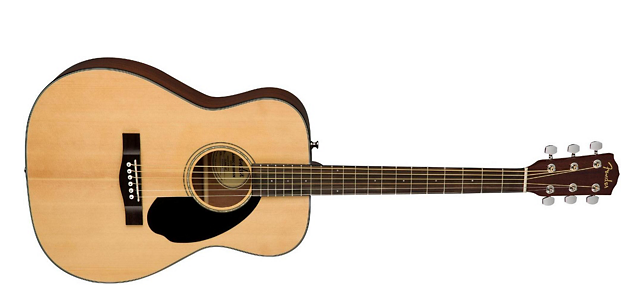


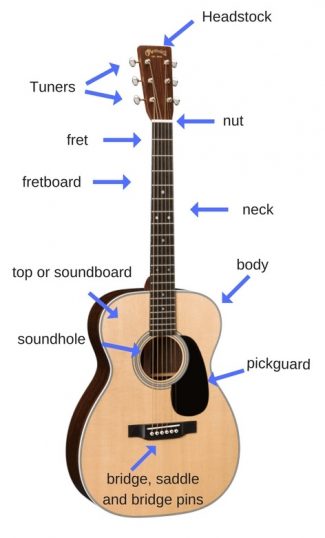
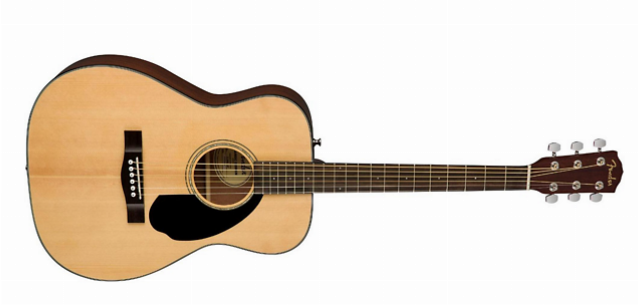

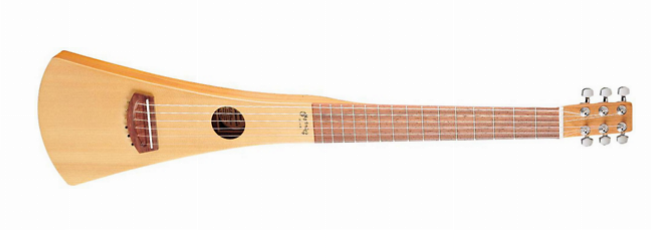
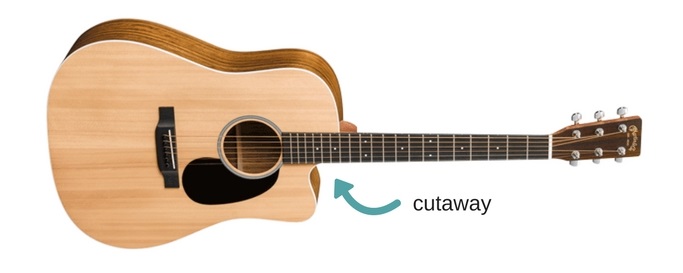
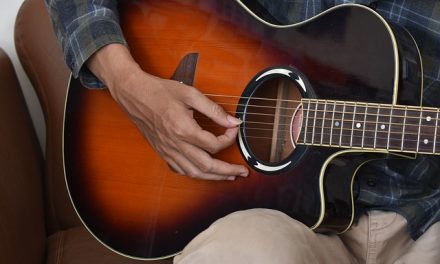

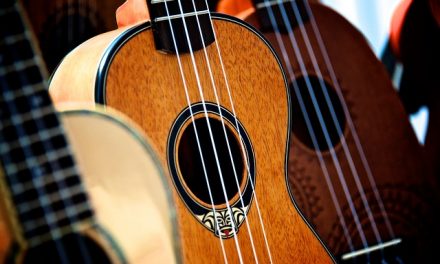


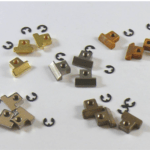



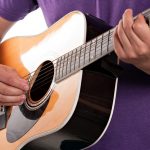



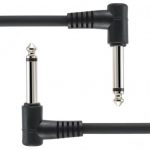
This is such a comprehensive guide and great resource! thanks for putting it together!
Hi, I’m in Australia and want to buy new guitar. I tried to see on YouTube comparison between this guitars but It’s always one expensive guitar mostly Martin against less expensive one. They will be nice if we have comparison in this range.
My choices are Blueridge BR-160CE ($1999), 140 ($1500), MARTIN DCRSG ROAD SERIES ($1999), MARTIN DCPA4 ($2199) GUILD D-150CE NAT WESTERLY OR YAMAHA A5R ($1999)? I can’t try this guitars because COVID situation, any advice or experience? Playing mainly fingerpicking blues or strumming some punk stuff, thanks.
P.S. I got one good advice is about Bluridge, I’m not interest in re-selling guitar just in sound.
Hi Ante:
I don’t have any experience with any of these guitars except the Guild D-150. I would wait until you can try them out in person, especially if you’re spending in the $2,000 range.
Michael
I don`t know much about acoustic guitars and was looking for was more info, this is great!